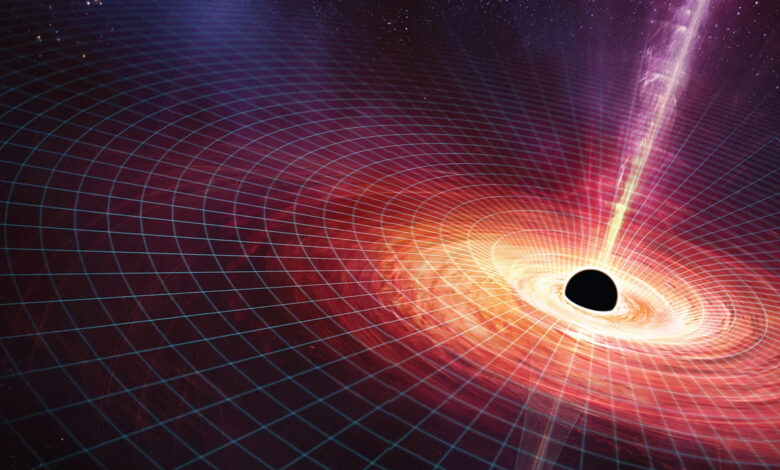
According to another scenario, black holes may have formed from heavy seeds with masses approximately a thousand times greater than known massive stars. Such a mechanism is called direct collapse, in which the primordial structures of the invisible and unknown matter of the universe, called dark matter, confine the gas clouds and, in turn, the background radiation prevents star formation in these clouds. As a result, instead of forming a star, a black hole is created.
The problem is that only a small fraction of dark matter halos grow large enough to form black hole seeds. As a result, this scenario is only justified if the initial black holes are rare.
A large number of black holes
Table of Contents
For years we had a good picture of the number of galaxies in the universe’s first few billion years; But finding a black hole in such an environment was very challenging and only the existence of luminous quasars could be proved.
Although black holes grow by ingesting material around them, this does not happen at a constant rate, for example they may divide their feeding into several meals, causing their luminosity to change over time. The researchers examined the change in brightness of some early galaxies over a 15-year period and used these changes to reach a new consensus on the number of black holes.
Based on the findings, the number of black holes residing in early ordinary galaxies is much higher than previously thought. Other recent research with the James Webb Space Telescope (JWST) has reached similar results. In general, the number of black holes formed by direct collapse is higher than previous estimates.
Read more:
There is an even weirder way black holes form that can produce massive yet abundant seeds. Stars are formed due to the gravitational contraction of gas clouds. If a significant number of dark matter particles are trapped during the contraction phase, the internal structure of the star changes completely and nuclear fusion is prevented.
Therefore, the growth of the star can continue for a longer period of time than the normal life of a normal star, and thus its mass increases. However, just like ordinary stars and objects resulting from direct collapse, nothing can resist the enormous force of gravity; This means that these “dark stars” will eventually collapse and form supermassive black holes.
Researchers now believe that similar processes took place to form the large number of black holes observed in the infant universe.
Future plans
Studies related to the formation of primordial black holes have undergone changes in the past two years; But research is still at the beginning of the path.
New space observatories such as the Euclid Telescope or the Nancy Grace Roman Space Telescope are making it possible to count even more faint quasars of the early universe. The New Athena mission and the square kilometer array in Australia and South Africa will also revolutionize our understanding of many of the processes around black holes in the early universe.
However, in the short term we can only rely on the James Webb telescope. With its high sensitivity for imaging and monitoring, and spectroscopic capabilities for observing the very faint activity of black holes, this amazing instrument could in the next five years determine the number of black holes in the universe’s first galaxies.
We may even observe the formation of black holes in action by detecting the explosions associated with the collapse of the universe’s first stars. The models say it’s possible, but it will require a concerted and sustained effort by astronomers.









